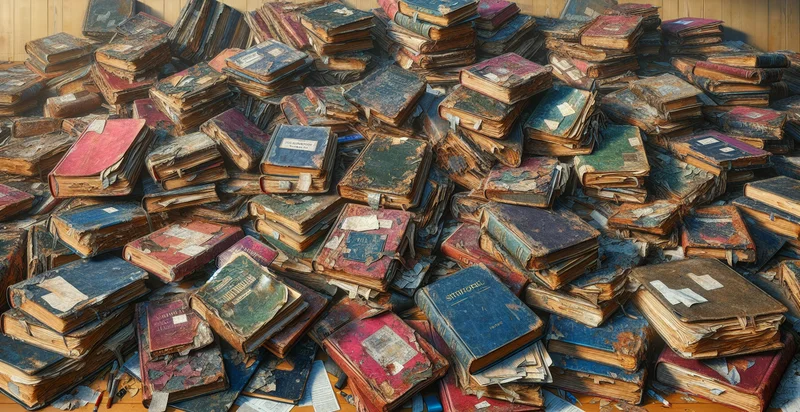Identify damaged textbooks
using AI
Below is a free classifier to identify damaged textbooks. Just upload your image, and our AI will predict if the textbook is damaged - in just seconds.

Contact us for API access
Or, use Nyckel to build highly-accurate custom classifiers in just minutes. No PhD required.
Get started
import nyckel
credentials = nyckel.Credentials("YOUR_CLIENT_ID", "YOUR_CLIENT_SECRET")
nyckel.invoke("damaged-textbooks-identifier", "your_image_url", credentials)
fetch('https://www.nyckel.com/v1/functions/damaged-textbooks-identifier/invoke', {
method: 'POST',
headers: {
'Authorization': 'Bearer ' + 'YOUR_BEARER_TOKEN',
'Content-Type': 'application/json',
},
body: JSON.stringify(
{"data": "your_image_url"}
)
})
.then(response => response.json())
.then(data => console.log(data));
curl -X POST \
-H "Content-Type: application/json" \
-H "Authorization: Bearer YOUR_BEARER_TOKEN" \
-d '{"data": "your_image_url"}' \
https://www.nyckel.com/v1/functions/damaged-textbooks-identifier/invoke
How this classifier works
To start, upload your image. Our AI tool will then predict if the textbook is damaged.
This pretrained image model uses a Nyckel-created dataset and has 2 labels, including Damaged and Undamaged.
We'll also show a confidence score (the higher the number, the more confident the AI model is around if the textbook is damaged).
Whether you're just curious or building damaged textbooks detection into your application, we hope our classifier proves helpful.
Related Classifiers
Need to identify damaged textbooks at scale?
Get API or Zapier access to this classifier for free. It's perfect for:
- Quality Control in Book Publishing: Publishers can use the damaged textbooks identifier to automatically assess the quality of textbooks before they are shipped. This system helps ensure that only undamaged copies reach retailers and customers, reducing return rates and improving customer satisfaction.
- Inventory Management for Retailers: Book retailers can implement this classification function to scan their inventory and identify damaged textbooks. This allows stores to efficiently remove damaged books from shelves, ensuring a better shopping experience and maintaining the integrity of their inventory.
- E-commerce Return Processing: E-commerce platforms can integrate the damaged textbooks identifier into their return processing systems. When customers return books, the platform can quickly assess the condition of the textbooks, streamlining the return process and enhancing the handling of refunds or exchanges.
- Library Cataloging and Maintenance: Libraries can utilize this technology to conduct routine assessments of their collections. By identifying damaged textbooks early, libraries can prioritize repairs or replacements, thus maintaining the quality of their resources for patrons.
- Insurance Claims Processing: Insurance companies can deploy the damaged textbooks identifier to assist in the claims processing of damages claimed by educational institutions. This helps provide swift assessments of the situation, leading to quicker resolutions and policyholder satisfaction.
- Textbook Resale Platforms: Resale platforms can leverage this technology to accurately assess the condition of used textbooks before listing them for sale. By ensuring that only textbooks in acceptable condition are sold, these platforms can build trust with buyers and reduce complaints.
- Educational Institution Inventory Audits: Schools and universities can integrate the damaged textbooks identifier into their inventory auditing processes to regularly assess the condition of their textbooks. This proactive approach helps institutions maintain their educational materials effectively and plan for necessary replacements or repairs.


